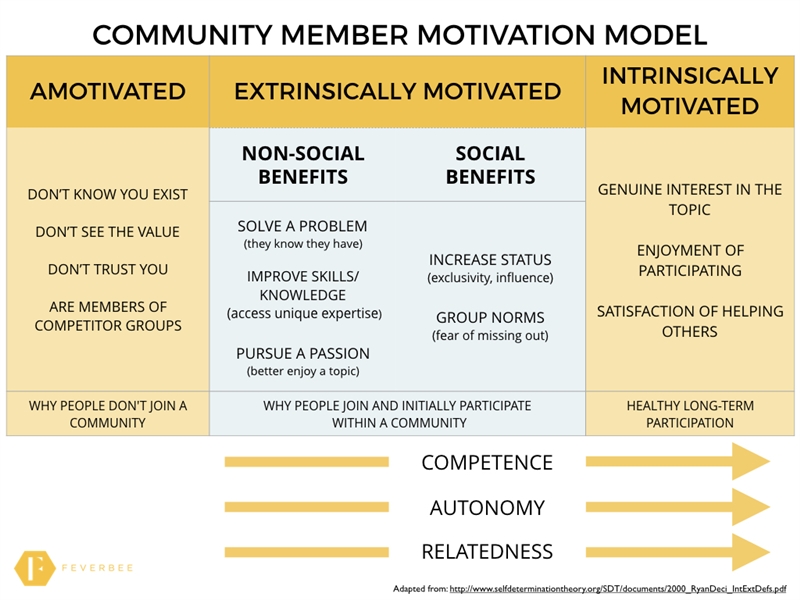Success can be ever so fleeting. What seems like a great community launch so often turns into a ghost town of little or no activity.
But there’s something you can do about it. The key is to understanding the psychological motivations of your members.
Most members have joined because they initially have a problem they are trying to solve, a skill they want to improve, or a passion they wish to pursue. These are definitely motivating reasons to join but they aren’t good enough for someone to stick around.
To make your social platform into a true community, you must emphasize the social benefits and appeal to intrinsic motivations in order to encourage your members to participate in the long term.
As the figure below illustrates, the more that you enable the feelings of competence, autonomy and relatedness, the greater your chances for success.
When you think about sustaining a successful community, find ways to make your community platform a powerfully appealing place to express a genuine interest, feel a sense of belonging, empowerment, and satisfaction. These are the pillars of self-determination theory that underlies much of FeverBee’s work.
What are you doing to make your members feel smarter, empowered, and more connected?
Watch the video of a talk by Richard Millington, the founder of FeverBee, for more ideas about how to build self-determination theory into your online community system.
Todd Nilson is the director of consultancy for FeverBee, a top global consulting organization that provides consultancy, training, and technology to help companies build thriving online communities. Their work is based on proven social science and data-driven insights. Join community management experts to talk about your challenges and get access to dozens of useful resources and templates at feverbee.com.


